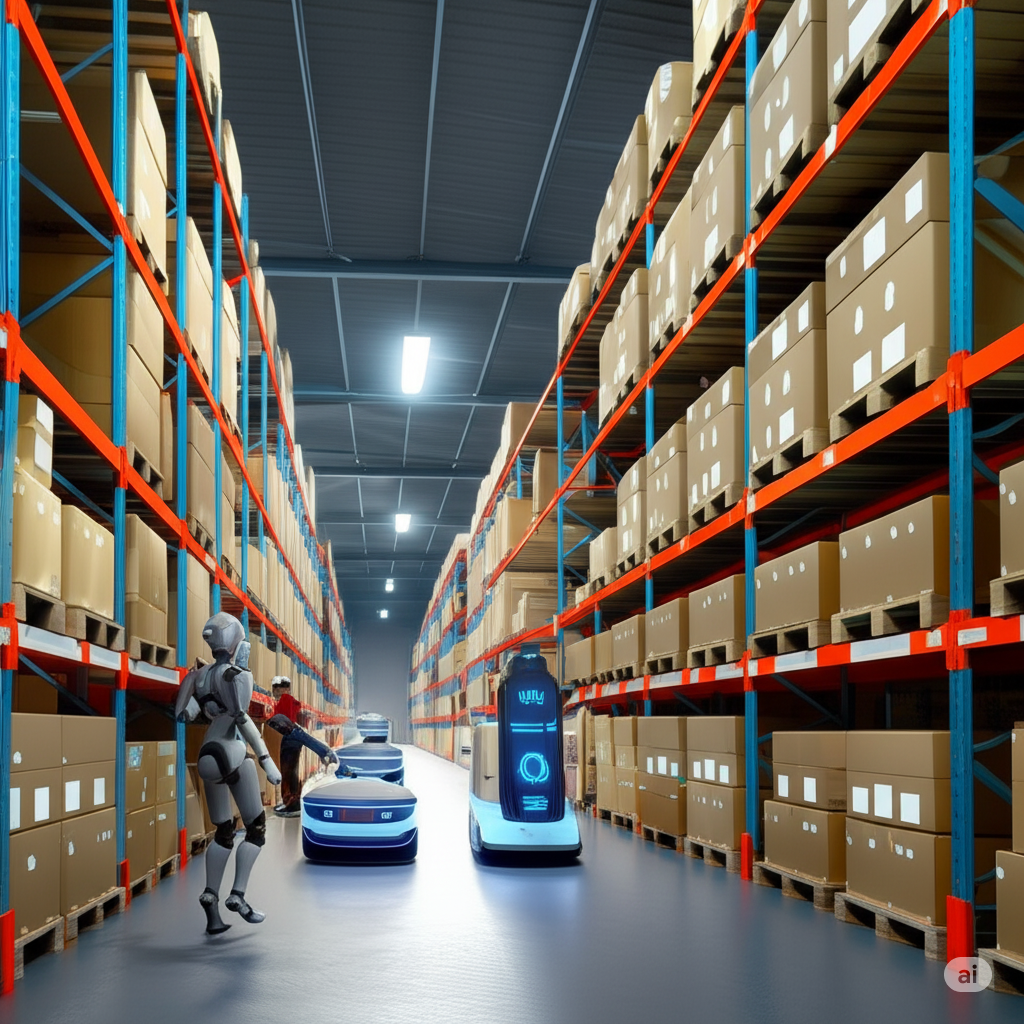In-short:
- The global workforce is undergoing a historic shift as robots and AI-powered automation systems become integral in industries like manufacturing, retail, logistics, healthcare, and services.
- From cobots (collaborative robots) on factory floors to robotic process automation in offices, machines are performing tasks once handled by humans.
- This transition raises major questions about employment, retraining, economic policy, and the future of human-machine collaboration.
- While automation offers greater efficiency and cost savings, it also demands thoughtful strategies to avoid deepening inequality.
- The blog dives into real-world examples, challenges, innovations, and expert insights on how society can adapt.
Introduction
Imagine walking into a warehouse buzzing with activity—but not a single human in sight. Packages move seamlessly on conveyor belts, robotic arms assemble products with precision, and drones hover above, scanning inventory. This is not a sci-fi fantasy. This is the emerging face of the modern workforce.
As robotics and artificial intelligence technologies mature, the world is experiencing a major transformation in how work is done. The rise of the robot workforce is no longer a possibility—it’s a reality reshaping economies, industries, and the very nature of human labor.
This blog explores the scope of this shift, from the latest innovations and key use cases to its profound implications on society, employment, and policy.
Understanding the Robot Workforce: Definitions and Technologies
Before diving into its impact, it’s important to understand what the “robot workforce” includes:
- Industrial Robots: Used primarily in manufacturing for assembly, welding, painting, etc.
- Service Robots: Found in hospitality, retail, cleaning, and healthcare (e.g., delivery robots, surgical robots).
- Cobots: Collaborative robots designed to work alongside humans in factories and warehouses.
- Software Robots: RPA (Robotic Process Automation) bots handling routine digital tasks like invoice processing.
Core Technologies:
- Machine Learning & AI
- Computer Vision
- Natural Language Processing (NLP)
- Sensors and IoT integration
These advancements are enabling robots to perform complex, cognitive, and physical tasks with growing independence and accuracy.
Industries at the Forefront of Robot Adoption
- Manufacturing: Robotics have long been used on assembly lines, but newer cobots are increasing safety and collaboration.
- Logistics and Warehousing: Amazon and Alibaba use fleets of robots for inventory management and delivery.
- Retail: Autonomous checkout systems, stock-monitoring bots, and customer service robots are rising.
- Healthcare: Surgical robots like the da Vinci system assist in precision operations, while hospital robots manage sanitization and delivery.
- Hospitality: AI-powered concierge and cleaning robots are now common in high-end hotels.
- Agriculture: Automated tractors, drones, and robotic harvesters are revolutionizing farming.
Benefits of a Robot Workforce
- Increased Productivity: Robots can operate 24/7 without fatigue, leading to higher output.
- Cost Efficiency: After initial investment, robots often reduce long-term labor costs.
- Enhanced Safety: Robots can perform dangerous tasks, reducing workplace injuries.
- Consistency & Precision: Robots minimize human error and deliver uniform quality.
The Impact on Human Jobs
One of the biggest concerns around automation is job displacement:
- Studies suggest that up to 47% of current jobs may be automated by 2035.
- Low-skill and routine jobs are at higher risk (e.g., cashiers, data entry).
- New job categories are emerging (e.g., robot maintenance, AI ethicists), but they require advanced skills.
Case Study: Foxconn replaced over 60,000 workers with robots in a single year at its iPhone manufacturing plant in China.
Economic and Social Implications
- Widening Inequality: Without proper intervention, automation could benefit large tech firms while displacing millions.
- Policy Challenges: Governments must rethink taxation, social safety nets, and minimum wage laws.
- Education and Upskilling: There is an urgent need for reskilling programs to prepare workers for a tech-driven future.
Human-Robot Collaboration: A Balanced Future
Rather than full replacement, a more sustainable model involves human-robot collaboration:
- Cobots enhance human workers by reducing physical strain.
- Robots handle repetitive tasks while humans manage creativity and decision-making.
Example: In BMW’s plants, cobots assist workers by holding parts in place during complex assembly.
Ethical and Regulatory Considerations
With greater automation come new ethical questions:
- Should robots pay “robot taxes” to offset human job loss?
- How do we handle data privacy and surveillance?
- What are the moral implications of replacing human care with machines (e.g., in eldercare)?
Governments and global organizations are now debating frameworks for responsible AI and robotics deployment.
Global Trends and Regional Differences
- Asia: Japan, South Korea, and China are leaders in robot deployment.
- Europe: Germany and the Nordics are investing in industrial and healthcare robots.
- USA: Tech giants lead in AI and automation, but adoption varies by sector.
- India & Africa: Emerging markets are beginning to integrate automation in logistics and agriculture.
Preparing for the Robot-Driven Future
Strategies for governments, businesses, and individuals:
- Invest in lifelong learning and vocational training.
- Support innovation while ensuring inclusive growth.
- Encourage public-private partnerships for upskilling.
- Foster global collaboration on AI ethics and labor standards.
Conclusion
The rise of the robot workforce is not a distant future—it’s happening now. As machines take on more roles across industries, the focus must shift to how humans and robots can coexist and collaborate.
By proactively addressing the challenges of automation—while embracing its benefits—we can build a future of work that is efficient, inclusive, and meaningful.









+ There are no comments
Add yours